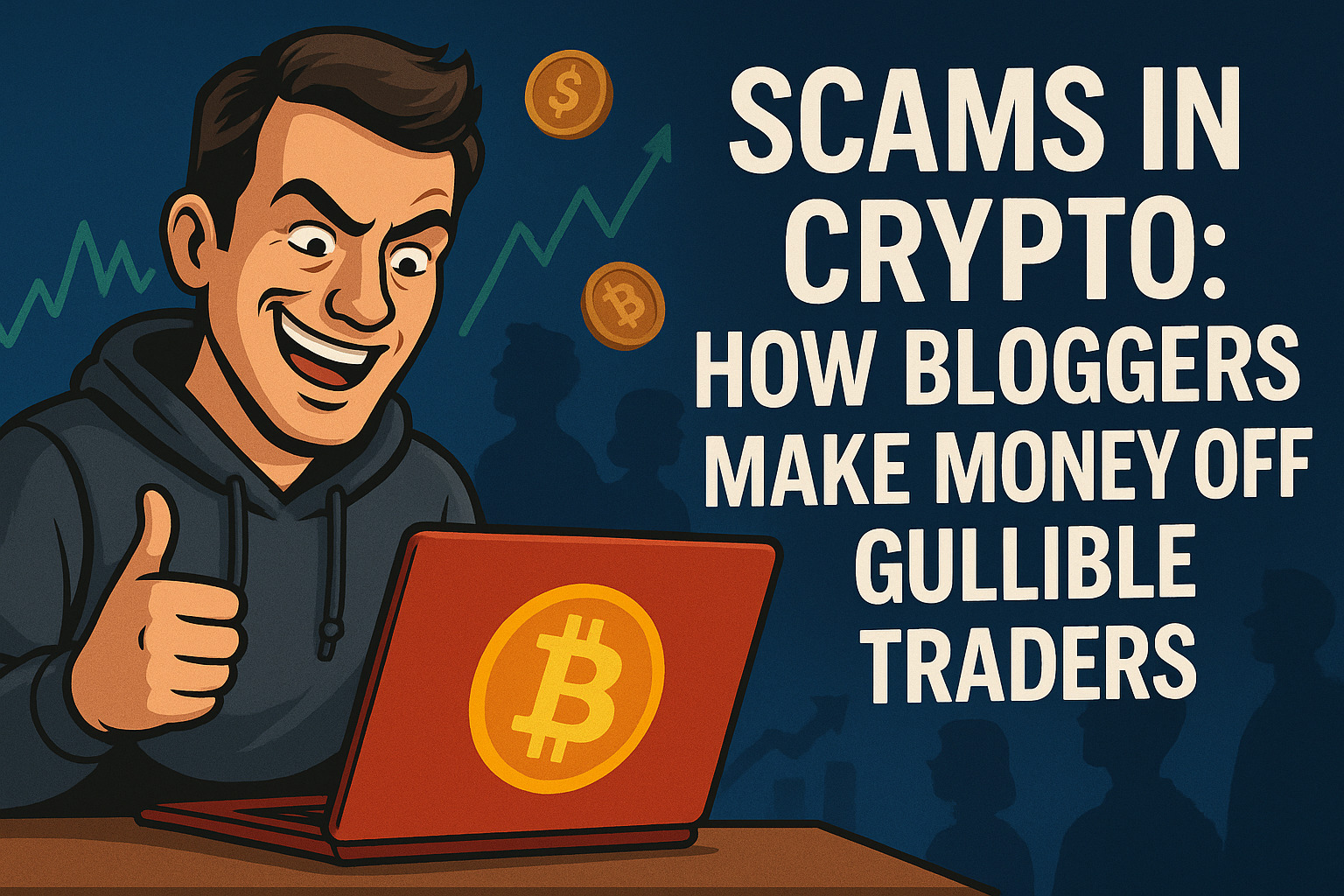
How Bloggers Profit from Naive Crypto Beginners: Real Schemes and Tricks
The cryptocurrency market is not only about technology and earning opportunities — it’s also a perfect environment for manipulation. Especially in the era of social media, where a single post or video can trigger a mass pump or dump of a coin.
It’s easy to lose money driven by emotions and greed — and dishonest influencers and so-called “gurus” know this well. In this article, we’ll reveal real schemes that are currently being used to deceive beginners.
📈 Scheme 1: “A Whale Bought In — You Should Too”
How it works:
- Someone makes a large purchase of a coin.
- A wave of social media and Telegram posts is launched:
“Anonymous wallet bought $2 million worth of Token X! Big pump incoming!” - Retail traders rush to buy the coin.
- Pump organizers sell their holdings at the peak — leaving others with losses.
👉 Goal: artificially create a pump using retail “herd” buying pressure.
🎯 Scheme 2: “Double Signal — Double Profit”
How “perfect” signals are made:
- The influencer opens two opposite positions (long and short).
- Later, they post only the trade that turned out profitable.
- The losing trade is deleted or hidden.
👉 Goal: create an illusion of consistent success and sell paid subscriptions to “winning signals.”
🧪 Scheme 3: “Fake IDOs and Phantom Tokens”
How it works:
- A “pre-sale” for a new token is launched.
- Fake partners, polished websites, and even counterfeit Binance or other big company logos are used.
- Influencers promote the project with referral links.
- After raising funds, the token disappears and the website shuts down.
Examples: SaveTheKids, SQUID Token, and others.
👉 Goal: collect money from trusting investors.
🧠 Scheme 4: “Authority Manipulation”
How it works:
- Influencer posts content like:
“80% of my portfolio is in Token X — you decide for yourself.” - Audience rushes into the asset, pushing up the price.
- After a while, the influencer sells tokens at a profit.
👉 Goal: leverage authority effect and FOMO (Fear of Missing Out).
🧾 Scheme 5: “Fake Reports and Backtests”
How it looks:
- Screenshots are published claiming 300% profit in 3 months.
- In reality, it’s a backtest with “perfect” hindsight-optimized parameters.
- In live trading, such strategies either don’t work or produce unstable results.
👉 Goal: sell access to a “magic” trading system or bot.
💬 Scheme 6: “Hello from the Chat” — an Old Trick in a New Disguise
Scammers are getting more creative. Instead of direct approaches, they now exploit trust and familiarity. This scheme unfolds in stages:
Variant 1: “Bro, you sound smart…” Someone messages you, supposedly impressed by something you wrote in a crypto chat or Telegram channel (though they’re not even in that group). They forward your own message and say something like: “You write really well. I’ve been in crypto for years. I’m a sheikh from Dubai, and I can tell you’re no rookie…”
Then comes the usual routine: tales of massive success, supposed investments, passive income — and an offer to “get in while you can.” The result? The promises vanish, and so does your money.
Variant 2: “I’ve got a free course for you” A friendly DM pops up: “Saw you in a crypto group. I just finished this amazing workshop — I can send you the materials for free, you’ll love it.”
What’s behind the “materials”? → A suspicious file (a trojan) → A phishing link → Or a fake conversation slowly leading to a scam: from a fake investment project to a bogus airdrop.
👉 The scammer’s goal is to infect your device, trick you out of money, or lure you into a dangerous trap.
🛡️ How to stay safe:
• Don’t engage in chats with strangers — even if they flatter you or use your own words • Never download files or click links from unsolicited DMs • Check profiles: account age, activity, group presence • Use anti-spam bots and add a warning to your channel description like: “I never DM first” • Report suspicious messages to admins — it helps protect the whole community
Remember: In crypto, no one shares “exclusive resources” just out of kindness. Free cheese only comes in a mousetrap.
🧭 How to Avoid These Traps:
- Don’t blindly trust words, screenshots, or “success stories” — they’re easy to fake.
- Study real actions — what matters is what people do, not what they say.
- Always conduct your own analysis — check charts, volumes, and market context.
- Only trade with money you can afford to lose.
- Don’t shift responsibility for your trades onto someone else’s “advice” or “signals.”
Conclusion
In crypto, analysis matters more than belief. Every trade is your personal decision. Don’t blindly follow popular influencers or “gurus.” Even if someone looks successful — that’s no guarantee of honesty or competence.
Think critically. Verify information. Trade consciously.
And remember — you are the only person responsible for your results.
Trade smart. Trade with RevenueBot.
